Growing chlorophytum
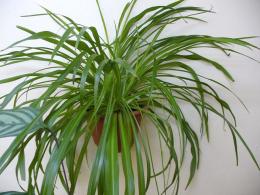
Any housewarming is associated with flowers. It could be just a bouquet as a congratulation or a pot with an unusual indoor plant. Such as, for example, chlorophytum, with stems hanging majestically from the edges of the flowerpot and, in a businesslike manner, participating in choosing a convenient place for itself in a new apartment.
According to legend, it is this flower that should be the first to appear in a new home. His powerful positive energy served as a help and a guarantee of success and peace in the life of the owners. And in order for him to feel good in his new home, he needs very little warmth, care and proper care.
Content:
History of chlorophytum
Chlorophytum is a perennial herbaceous plant. lily family. In the wild, it is found in the subtropical regions of South Africa, America, the island of Madagascar, and Australia.
Most often, it grows on the bark of trees as an epiphytic plant, retaining the ability to live even in the driest times due to the moisture and nutrients contained in the tuberous roots.
Fans of indoor floriculture consider it one of the simplest and most popular plants. Sometimes it is called "green lily" or "flying Dutchman". In Holland, this indoor plant has been grown for more than 200 years.
Appearance and varieties of chlorophytum
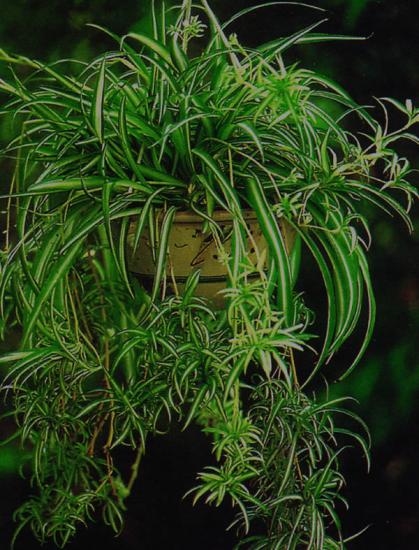
The hanging plant has narrow linear leaves and flower stalks up to a meter long. The leaves are green in color, but they may have white or yellow stripes. The flowers are small and white.Typically, an arrow appears from the center of the rosette, and six white flowers appear on the flower cluster.
It is on the flower stalks that new rosettes of leaves appear, creating an original decorative effect. Excess air rosettes can be separated for planting in another pot.
Among the 250 plant species, the most commonly grown are:
- Chlorophytum crested or Chlorophytum comosum (Thunb.) Jacques. There are several decorative varieties chlorophytum. It is vittatum, with longitudinal stripes located in the middle of the leaf. Variety Variegatum has striped edges. Chlorophytum Variegatum, its leaves are decorated with longitudinal stripes of yellow color. This variety has the ability to produce a large number of children, which weakens its growth. Therefore, it is recommended to remove some of them.
- Chlorophytum cape or Ch. capense L. A perennial plant with thickened tuberous roots, narrow, gradually tapering leaves in the shape of a light green groove. This type of chlorophytum does not form daughter rosettes on its peduncles.
- Chlorophytum winged or Ch. amaniense Engl. Varieties Green Orange and Fire Flash are distinguished by wide, juicy green leaves and pink petioles. To preserve their bright shade, it is recommended to remove the emerging inflorescences, leaving one for seed production.
- Chlorophytum curly Bonnie. Its leaves curl around the flowerpot, and do not hang down, like Chlorophytum crested. One white stripe runs down the center of the sheet. Rosettes of new plants form on the peduncles after flowering.
- Chlorophytum Laxum. This species is rare. It can be distinguished by a winding white stripe running along the edge of the leaf. The bush is a dense rosette. The flower looks like a spikelet and does not form new children.
Tips for caring for chlorophytum
The plant has no special requirements for your active growth. It grows well in sun or partial shade. You just need to remember that variegated varieties in the shade lose a large percentage of the beauty of their leaves. Even at an uncomfortable temperature, the flower does not die, but worsens its appearance. Therefore, you should not place it on northern windows and drafts.
You need to water the flower often and abundantly and make sure that the soil in the pot is never dry. It tolerates spraying well, although it can develop in dry air. In case of lack of water, it begins to form many tuberous roots. In order to accumulate reserves of necessary substances. In this case, the decorative value of the plant is reduced.
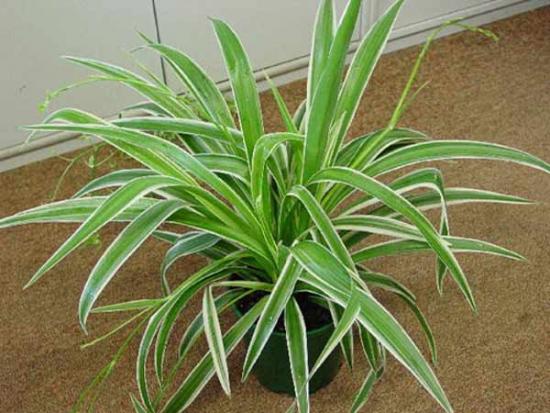
Twice a month, along with watering, fertilize with a solution of complex mineral fertilizer. The plant is replanted once every three years in February or March. If this is not done, large, thick roots may form cracks at the very bottom of the pot. For transplantation, a light, non-acidic substrate with a well-organized drainage system is used.
The recommended soil composition is a mixture of equal parts of sand, leaf soil and humus. The pot should not be small. In a cramped pot, weak flower stalks without daughter rosettes are formed.
Propagation is easiest done using small rosettes or dividing overgrown bushes. Daughter plants can simply be sprinkled with soil next to the mother bush. After strong leaves appear, the rosette is cut off and transplanted to another place.
The seed growing method is most often used for Chlorophytum alata.The seeds, pre-soaked for 10 hours, are laid out on the surface of the soil, lightly pressing and not falling asleep. Cover with a jar and try to maintain the temperature around 21°.
Gently moisten and ventilate regularly. Shoots appear in a month or even more. You can't remove the jar right away. The seedlings are very weak and are gradually hardened. After three leaves have grown, the seedlings can be moved to a permanent location.
In order to see problems that have arisen in time and help the plant, you need to regularly inspect it. A sign of trouble may be the appearance brown tips on leaves. First of all, this indicates improper watering, hypothermia of the plant, as well as forgotten timely feeding.
In winter, with active heating, spots on the leaves may appear due to excess watering. If the soil at the roots of the plant dries out, the leaves may wrinkle and brown spots may also appear on them. Frequent careful inspection will help to recognize the appearance of spider mites, thrips, and scale insects in time.
The first aid to the plant in this case is to wipe it with a soapy sponge and wash it with a warm shower. Further actions involve treatment with special chemicals. When scale insects appear on the surface of stems and leaves, brown plaques appear. The plant dries out.
Scale insects are combated by spraying with Actellik solution in accordance with the instructions. If this is not done in time, sooty fungus quickly develops in the sticky secretions formed when scale insects infest, leading to the death of chlorophytum. A sign of the appearance of spider mites is lethargy of the leaves and cobwebs in the internodes.
It develops most actively in an atmosphere of dry air.
To combat spider mites, use the same drug as for scale insects. Thrips most often appear when there is excessive moisture. One of the means to combat them is naphthalene.
Several balls of it are placed next to the plants. Spraying with a solution of karbofos will help defeat the mealybug, which is visible by wilting and dropping leaves.
In addition to purely decorative qualities, the flower serves as an assistant in the house for purifying the air. This property is especially effective in Chlorophytum crested. It is capable of destroying a large number of pathogenic microbes.
By absorbing formaldehyde and nitric oxide, it releases a sufficient amount of oxygen. Therefore, it is recommended to place it in rooms where small children live.
By planting chlorophytum next to other indoor flowers, they create beautiful compositions that surprise with their originality.
Tips for caring for chlorophytum
Interesting information about the vegetable garden

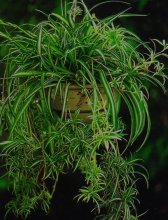
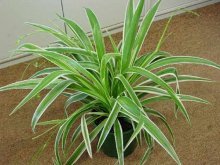
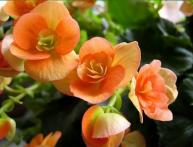
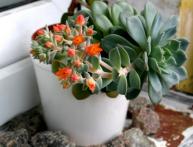
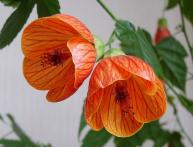
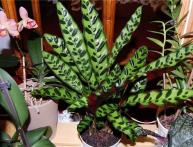
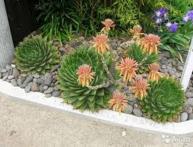
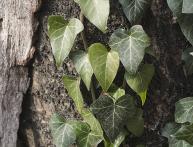
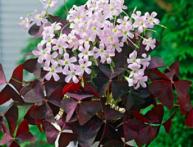

Comments
Previously, the whole house was strewn with chlorophytum, even at school I remember it was full of this plant. But now it’s somehow uninteresting, I’ll imagine how to wipe and spray each thin leaf - I don’t want to.